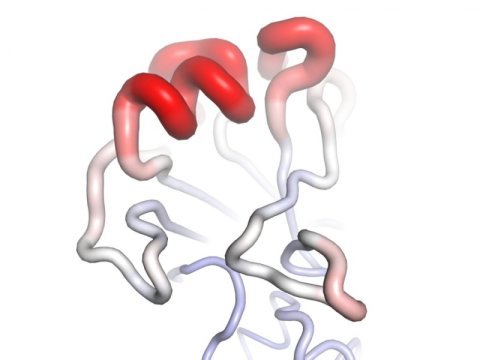According to a replacement study from scientists at The Scripps analysis Institute (TSRI), the common follow of growing respiratory illness vaccinum elements in chicken eggs disrupts the main protein target web site on the virus surface, rendering the respiratory disease vaccinum less effective in humans.
"Now we are able to justify -- at associate atomic level -- why egg-based vaccinum production is inflicting issues," same TSRI analysis Associate Nicholas Wu, Ph.D., 1st author of the study, printed recently within the journal PLOS Pathogens.
For quite seventy years, makers have created the respiratory disease vaccinum by injecting respiratory illness into chicken eggs, permitting the virus to duplicate within the eggs and so purifying the fluid from the eggs to induce enough of the virus to use in vaccines.
The subtype of respiratory illness during this study, referred to as H3N2, is one in all many subtypes shown to change once big in chicken eggs, and therefore the researchers say the new findings any support the case for different approaches to growing the virus.
"Any respiratory illness viruses created in eggs got to adapt to growing therein setting and therefore generate mutations to grow higher," explained study senior author Ian Wilson, D.Phil., Hansen academician of Structural Biology at TSRI.
The new study shows precisely why egg-based producing could be a downside for the H3N2 subtype. As H3N2 respiratory illness has become additional current, scientists formulating the seasonal respiratory disease vaccinum have sought-after to incorporate this virus and teach the human system to fight it. Despite this effort, recent respiratory disease vaccines have verified solely thirty three p.c effective against H3N2 viruses.
Wu used a high-resolution imaging technique referred to as X-ray natural philosophy to indicate that -- once big in eggs -- the H3N2 subtype mutates a key macromolecule to raised attach to receptors in bird cells. Specifically, there was a mutation referred to as L194P on the virus's hemagglutinin conjugated protein (HA). This mutation disrupts the region on the macromolecule that's unremarkably recognized by our system.
This means a vaccinum containing the mutated version of the macromolecule won't be ready to trigger an efficient immune reaction. This leaves the body while not protection against current strains of H3N2.
In fact, Wu's analysis shows that the present strain of H3N2 utilized in vaccines already contains this specific mutation L194P on angular distance. "Vaccine producers have to be compelled to explore this mutation," cautioned Wu.
The researchers say any studies ar required to research replacement the egg-based system. "Other ways ar currently getting used and explored for production of vaccines in class cells victimisation cell-based ways and recombinant angular distance macromolecule vaccines.
"There's an enormous want for respiratory disease vaccinum analysis.
Congratulations @aminaamira! You have received a personal award!
Click on the badge to view your Board of Honor.
Do not miss the last post from @steemitboard:
Congratulations @aminaamira! You received a personal award!
You can view your badges on your Steem Board and compare to others on the Steem Ranking
Do not miss the last post from @steemitboard:
Vote for @Steemitboard as a witness to get one more award and increased upvotes!